Flysight
A something imperfect
Steven Connor
More recently, art historians have begun to wonder whether the fly is quite so easily to be swatted for symbolic purposes. For the fly seems also to be used, as Felix Thülemann has put it, as “a selfconscious representation of superior painterly prowess.”[2] The fact that representations of flies are often to be found in the vicinity of artistic signatures, especially those which have the trompe l’oeil form of the rolled or torn strip of manuscript, seems to heighten the association between the fly and the making, even the maker, rather than the meaning, of the work of art. The fly that appears in the foreground of Portrait of a Carthusian by Petrus Christus (1446) perches on top of the trompe l’oeil wooden frame, on which is carved Petrus Xdi Me Fecit, perhaps hinting that the fly aspires to be the referent of “Me” rather than the painting. In a 1609 watercolor portrait of Dürer by Johann König, based on Dürer’s self-portrait as one of the figures in his Feast of the Rose Garlands (1506), Dürer is shown holding a piece of paper which has a fly in lieu of a signature.[3]
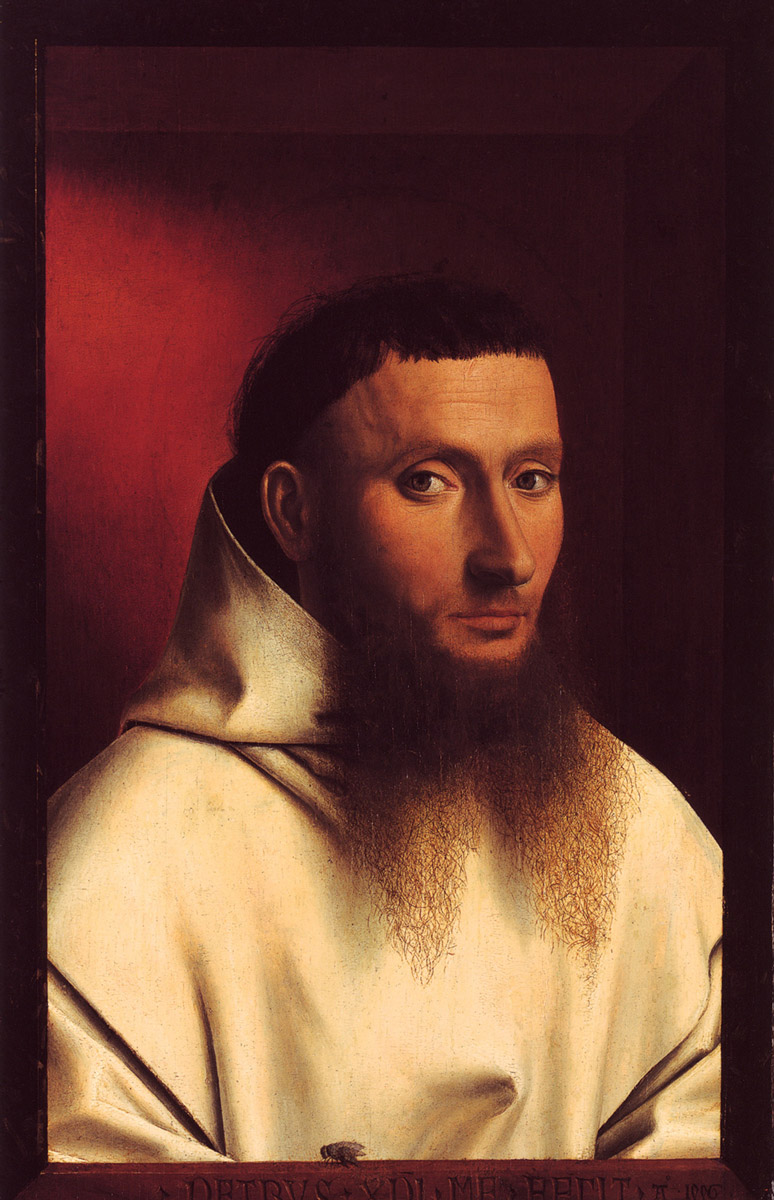
There is an ur-story of the painter and the fly, first told by Filarete in his Trattato di Architettura, written between 1461 and 1464, but known much more widely from Vasari’s brief reference to it in Lives of the Painters.[4] The young Giotto arrived in the studio of his master Cimabue to find a portrait in progress. Giotto painted a fly, seemingly poised on the nose of the painting’s subject. When the master returned to the studio, he attempted repeatedly to brush away the fly. Implicitly, this is the moment at which the genius of the young Giotto was noticed, and a new era of realism inaugurated. The story was quickly transferred to other artists. In his fictitious dialogue between Leonardo and Pheidias, Giovanni Paolo Lomazzo has Leonardo tell how the young Andrea Mantegna fooled his Mantuan Master by painting a fly on the eyelash of a lion in his painting of St. Jerome; envious of his talents, the Mantuan master sent his uppity apprentice away to work with Bellini.[5] In these stories, the fly signals the art that conceals the art of the painter, an ostentation arising in ordinariness, perfecting defacement.
When they stumble into art, flies are the ground promoted to the status of figure, a breaking through into visible significance of the blooming buzzing monotony of the insignificant, the accidental, the ignored; they are what Wallace Stevens calls “a repetition/In a repetitiousness of men and flies.”[6] Where other lowly or loathly creatures have often been held to characterize the abject or the informe, flies have a more specific office. As embodiments of accident, of what just happens to happen, as synecdoches of the untransfigured quotidian, their principal signification is as the opposite of art. And yet, for that very reason, flies have whizzed and crept and tiptoed across art and writing for centuries, never quite achieving the status of a subject, of that which may be fixed in view, and yet drawing the eye and soliciting the attentions of the forming hand. Flies are, in two senses, a provocation to art—a nose thumbed at art’s grandiose self-esteem, and a challenge to the artist’s skill. The fly is always caught—as though on a windowpane—between the condition of emblem and phenomenon: at first sight a mere smudge, blot, or blemish, which then becomes the emblem of its own obstructive phenomenality.
These two ways of reading the fly—as religious meaning or artistic exhibition—may seem to be at odds. When it is an emblem, one reads through the fly, the matter of which is lost in the lucidity of its import, the intelligible rendering the sensible as translucent as a windowpane. When the fly is rendered as surplus to semantic requirements, as a sport or painterly self-designation, it becomes visible as a foreign body that flies, or at least crawls, in the face of easy intelligibility. The accidental matter of the fly looks like one in the eye for meaning. Yet these two alternatives, of religious and artistic meaning, are in fact more tightly tied together than might seem.
For early Christians, who found it difficult to cast off the comfortable assumption of a creation divided between the divine and the demonic, flies represented a fiendish kind of anti-life. One inconvenient thing about this was that the supererogation of spontaneous generation seemed so to resemble the miracle of the Incarnation, which was also produced without the convenience of sexual intercourse. In his Liber de spiritus et anima, the twelfth-century Cistercian Alcherus of Clairvaux, known traditionally as pseudo-Augustine, not only acknowledged but approved the connection :
[I]f God can produce men by means of sperm, then he can also produce them without it. For if the sun, by its own power can generate a frog or a fly, without the concurrence therein of any other frog or fly, but merely from mud or mire, by how much more may God, through his infinite power, produce a man without any concurrence of male semen, but solely through the pure blood of the Blessed Virgin.[8]Despite the equivalence between spontaneous generation and immaculate conception, a contrast was traditionally drawn between the apparent casualness of the fly’s form and the perfection of man. However, there is an alternative tradition, which seems to have begun seriously only with the work of St. Augustine, one of the few patristic writers to recognize the dangers of the Manichean division between the realm of the divine and the realm of nature represented by the fly. Augustine was fond of pointing out that the idolatrous Egyptians, so skilled in forming representations of other creatures, were unable to represent flies, which only the Lord God, the supreme artificer, could fashion:
Pharaoh’s magicians also made serpents, and other similar things. Yet it is more of a wonder that, when it came to making the tiniest flies, the power of those who could make serpents failed them utterly. For the midges, which in the third plague fell upon the Egyptian people in their pride, were the most short-lived little flies. And yet there the impotent magicians said, “This is the finger of God.”[9]Augustine’s claims for the divine miracle of the fly’s construction were made in the teeth of a deep predisposition, among Christians and others, to see the fly as devilish, not just because of its association with filth, but also because it seemed a kind of counterfeit life, life self-realized in excess of the divine blueprint. What is most demonic about the fly is the dubiousness of its form. Indeed, we might even suppose that its promotion to the status of emblem is a kind of categorial domestication of that which is both insufficient and gratuitous in its being.
I cannot bear the dirty city fly or even the village fly with its swollen belly, yellow as mayonnaise, its black wings that look as if they had been dipped in some lugubrious necrophilic mascara. I love only the cleanest flies, super-gay, dressed in little grey alpace suits from Balenciaga, glittering like a dry rainbow, precise as mica, with granite eyes and with bellies of noble Naples yellow, such as the marvellous little olive flies of Port Lligat, where nobody lives except gala and dali. These little flies always have the grace to sit on the oxidised silver side of the olive leaf. They are the fairies of the Mediterranean.[11]
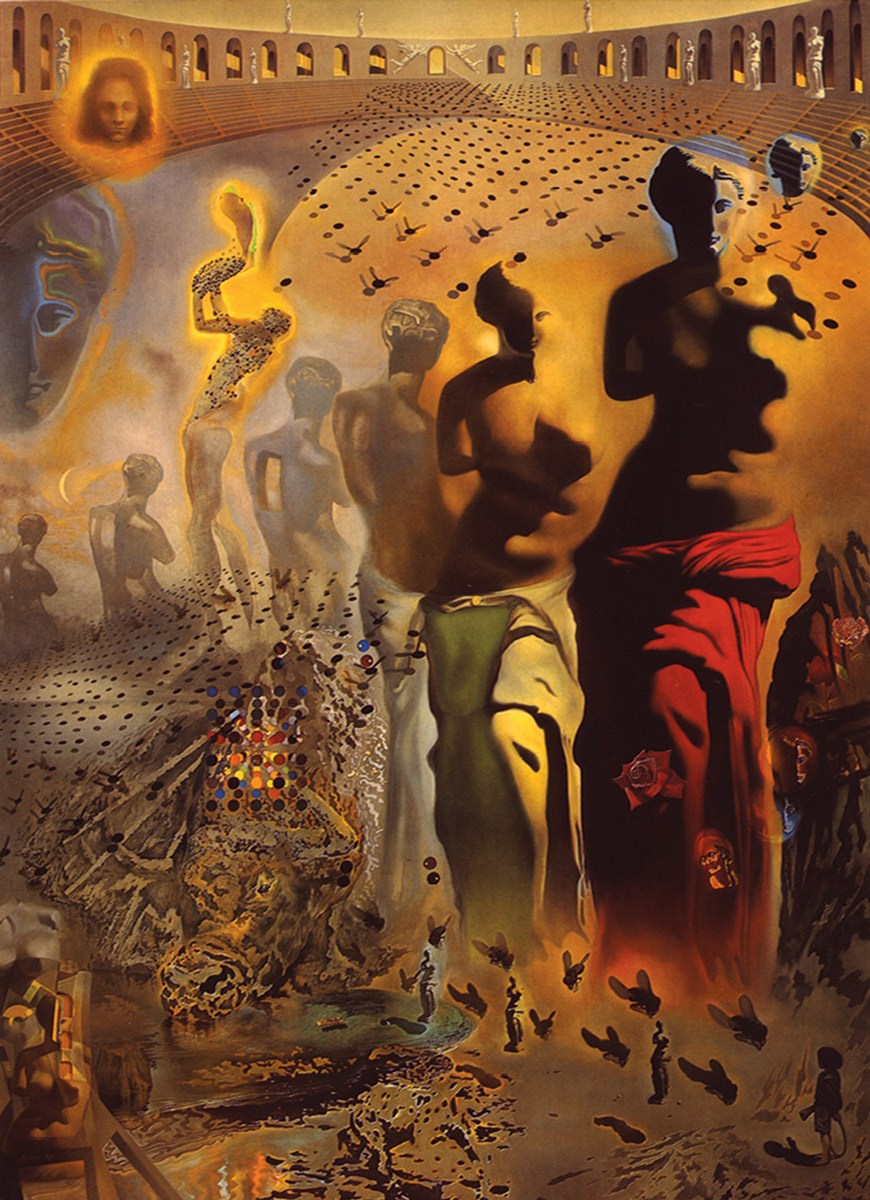
As well as incorporating flies in his art—examples include St. Narcissus of the Flies, The Hallucinogenic Toreador, and Ants, Nails, and Flies—Dali recruited them into the process of making it. His Diary of a Genius describes painting a painting of a rotten fish, naked in the hot sun and besieged by flies attracted both by the fish serving as his model and by a scab which had formed at the corner of his mouth:
I had to remain impervious to their bites, continuing unperturbed to perfect my strokes, painting the outline of a scale without so much as blinking, while at the same moment a fly clung frenziedly to my eyelid and three others glued themselves to my model. … The superhuman problem of painting while being devoured in this way by flies fascinated me and drove me to feats of agility I would not have been capable of without the flies.[12]The flies allow Dali to achieve concentration and centering, precisely because they threaten his composure. Indeed, the truth is that Dali does not love the flies in themselves, but rather for the challenge they pose to his powers of abstracting himself. Like Glenn Gould, who, for similar reasons perhaps, preferred to practice to the sound of a vacuum cleaner, Dali used the flies to secure art as the domain of the not-fly: “the day I find my thoughts are disturbed by the flies that cover me, I shall know this means that my ideas do not have the power of that paranoid stream which is the proof of my genius. On the other hand, if I do not notice the flies, it is the surest proof that I have the spiritual situation entirely under control.”[13]
In 1970, James Coleman shot Fly on a Super-8 camera. The piece follows the movements of two flies buzzing and fuddling futilely against a window pane through which may be made out the form of a storm-tossed tree; the camera may perhaps be trying to sight the tree with the flies, getting their movements to line up with its outline. As Jean Fisher suggests, the piece may allude to and sourly send up the demiurgic image of the artist presented in Hans Namuth’s 1950 film of Jackson Pollock painting on glass.[15] Here the work not only looks as though it had been formed from the unmeaning blots and trails left by snails, flies, or other insensate creatures, but it seems to identify its perception with that of the flies. Where Namuth’s film used the glass to give us the canvas’s view of the artist’s attentions, Coleman focuses attention—or, more strictly, unfocuses it—on the blur and buzz of what interposes itself between the glass and an apparent subject that lies beyond it. The lurches and zigzags of the flies become an erratic engine of vision.
In the following year, Yoko Ono produced a nineteen-minute film also entitled Fly. The film begins with a single fly exploring the naked body of a young woman (actress Virginia Lust). The film is a kind of blinding that invites us gradually to assemble the slivers of perception we are allowed into a whole body. Though we are encouraged to recognize the fly’s indifference to the codings of the bodily surface over which it makes its way, we cannot see the body with that same indifference. This is partly because the camera picks out and lingers on specific zones of the body, zones of sensitivity and erogenous sensation—nipple, hair, vulva, lip, toe. No doubt the flies anyway needed little encouragement to make for these particular dunes and declivities, since they also tend to have concentrations of odor and taste (and flies taste with their feet). The most striking, and sustained, sequence shows a fly performing fussily elaborate ablutions atop the gray-pink tumulus of a nipple. As the wings are primped and the forelegs carefully scoured, it is as though the fly were scrubbing up before a ticklish bit of surgery.
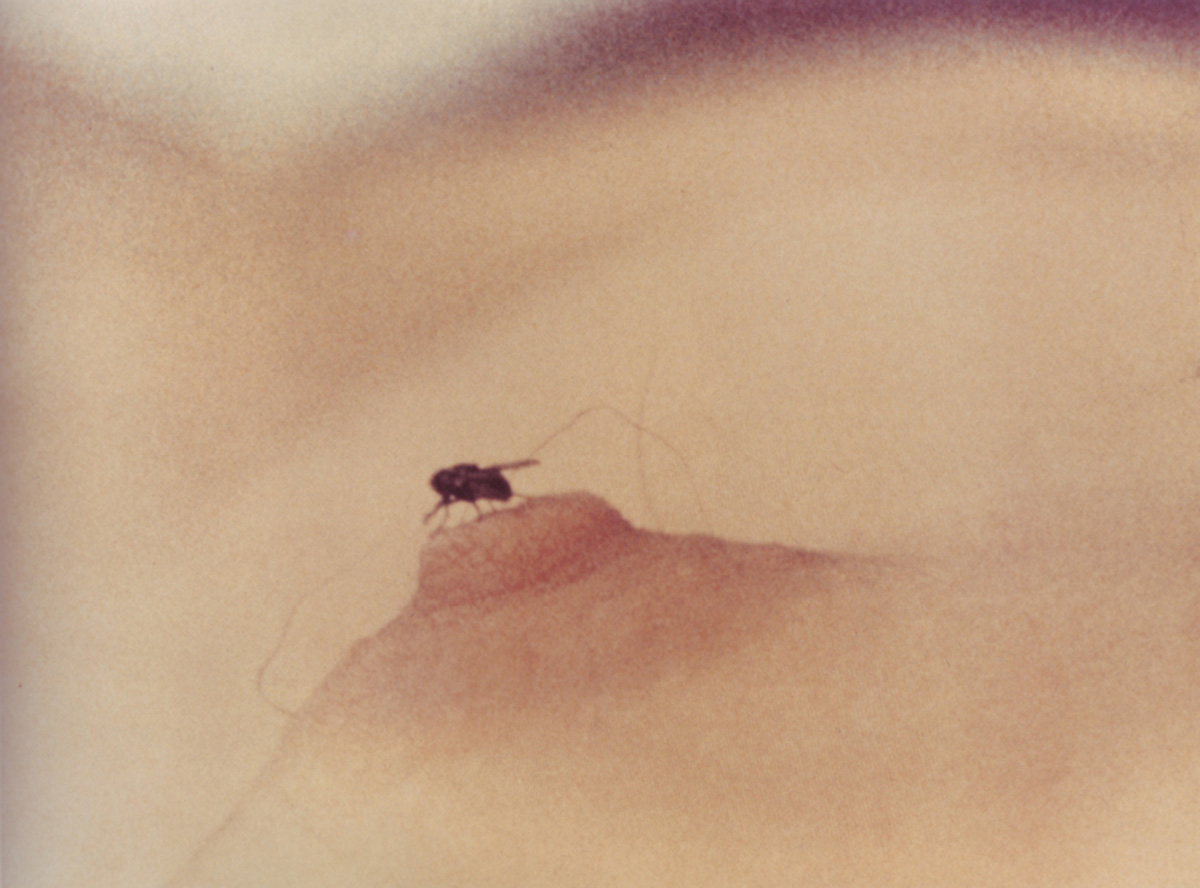
The sequences showing the fly moving across the woman’s face may remind us of the seventeenth-century craze for covering the skin in patches, which became known in England as “beauty spots” but were called mouches in France. Frans van der Myn’s painting The Fly (1742) invites the viewer to identify with the lady’s pleasure in the titillations provided by the tiny feet moving across her shoulder, the fly’s shape rhyming with the right nipple that is accommodatingly exposed, as though she were trying to tempt her guest to it. Her left hand is drawing aside her hair, tied in a blue ribbon, though we cannot tell whether this is to spread for the fly a more sumptuous expanse, or in preparation for the slap that will shortly dispatch it, at the expense of her bosom’s creamy immaculacy.
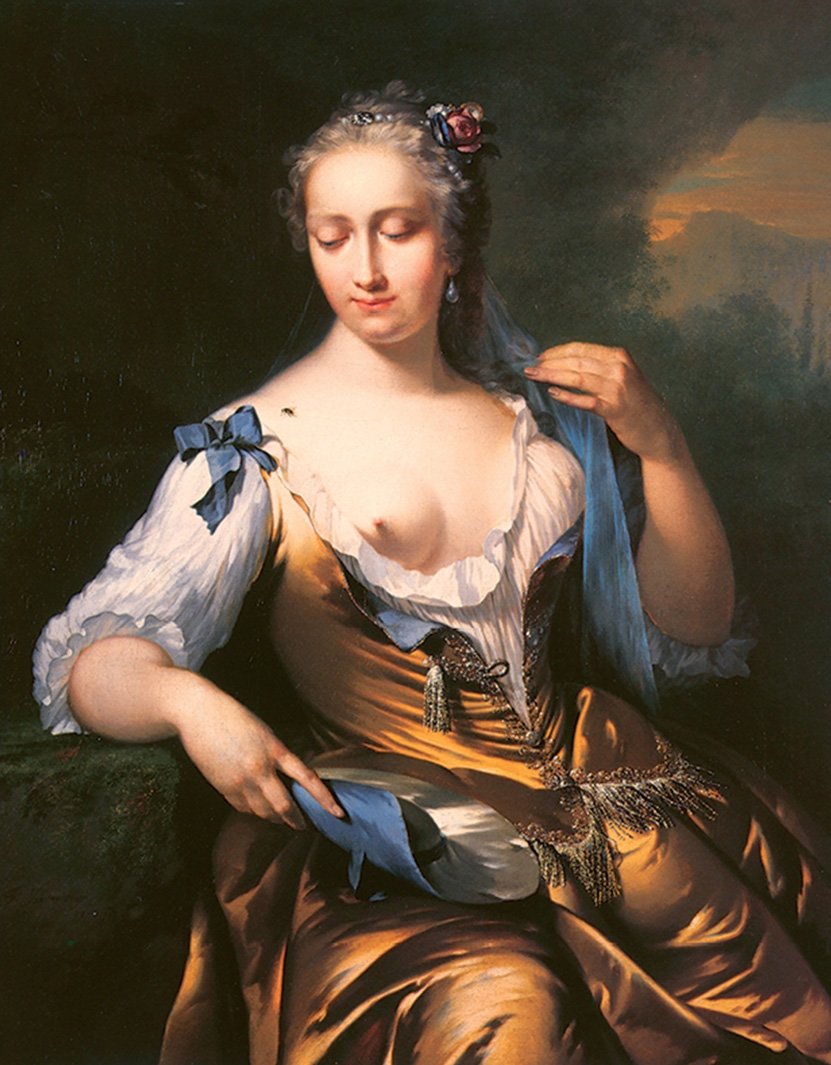
However, Ono’s film has usually been read as a protest against the desirous segmentations to which the female body must consent.[16] This idea has been confirmed by Ono herself: “It’s really obvious that Fly is the statement of a woman, what women go through. It’s interesting that from a male point of view, it’s a totally different film—it’s about curvature.”[17] At the end of the film, we are encouraged to relinquish the flies’ (and men’s) purblind addiction to curvature as the camera focuses on the blue sky outside the New York loft, but it certainly seems to be the case that, far from discomposing the camera’s gaze, as in Coleman’s film, the fly here is reduced to the condition of a viewfinder, the apparently intent singleness of its lubricious itinerary carefully put together from the walk-on parts played by a large number of anaesthetized flies—some two hundred, apparently.
As Ono’s Fly proceeds, the number of flies multiplies, and the camera correspondingly draws back to allow a fuller and more integrated view of the woman’s body. It is as though, rather than decomposing the scene, the flies were a way of keeping an eye on the body, an auxiliary eye that is itself unseeing, but which yet gradually effects a sort of reverse entomological anatomy, disclosing to view the whole body that it itself cannot discern. (Entomology and anatomy are significantly related: the insect, Greek entomos, is a creature that is cleft, or has a cut, Greek tomos, in its being; an anatomy is a dissection of that which is a-tomos, without section or division, thus an undoing of undividedness.) And yet, the more apprehensible the woman’s body in Fly becomes as an unsectioned singularity, the more like a corpse it seems; the suggestion now is that the flies are not so much exploring as consuming the body, their own bodies thus receding into their customary invisibility.
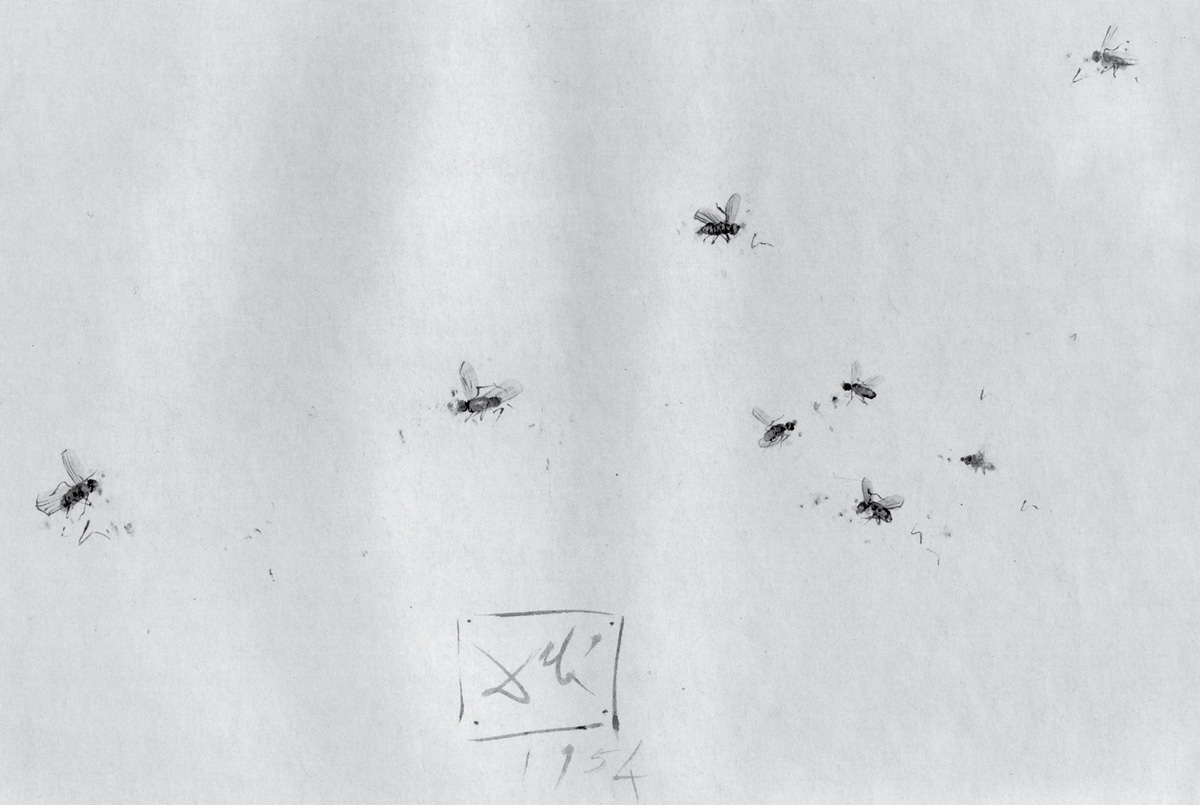
Flies have teased and tempted artists because they are always between world and work, between intelligent design and ordinary accident, between composition and discomposure. Dali’s Seven Flies and a Model (1954) is a work consisting of “ink and fly on paper,” in which we are teased by the fact that one of the flies scattered randomly over the surface of the page is not drawn but is real. Damien Hirst repeats the gesture on a huge scale in Armageddon (2002), in which the entire canvas is composed of dead flies. The fly is never wholly inside or outside the work. Declining to be vitrified beneath a layer of glaze, the fly always seems to be at both ends of the telescope, and on both sides of the glass.
- See, for example, Harry Kühnel, “Die Fliege—Symbol des Teufels und der Sündhaftigkeit,” in Aspekte der Germanistik: Festschrift für Hans-Friedrich Rosenfeld zum 90. Geburtstag, ed. Walter Tauber (Göppingen: Kümmerle, 1989), pp. 285–305, and Esperanza Aragonés Estella, “El vuelo de la mosca: Beelzebub en las artes,” Archivo español de arte, no. 75 (2002), pp. 439–446.
- Felix Thülemann, “Das Lukas-Triptychon in Stolzenhain: Ein verlorenes Hauptwerk von Robert Campin in einer Kopie aus der Werkstatt Derick Baegerts,” Zeitschrift für Kunstgeschichte, no. 55 (1992), p. 543.
- Anna Eörsi, “Puer, abige muscas! Remarks on Renaissance Flyology,” Acta Historiae Artium, no. 42 (2001), pp. 17–18.
- Antonio Averlino (Filarete), Treatise on Architecture, trans. John R. Spencer, 2 vols. (New Haven and London: Yale University Press, 1965), vol. 1, p. 309; Giorgio Vasari, Lives of the Painters, Sculptors and Architects, trans. Gaston du C. de Vere, ed. David Ekserdjian, 2 vols. (London: David Campbell, 1996), vol. 1, p. 117.
- Giovanni Paolo Lomazzo, I Sogni e ragionamento di Giovan Paolo Lomazzo Milanese, ed. R.P. Ciardi, 2 vols. (Florence: Marchi & Bertolli, 1974), vol. 1, pp. 93–4.
- Wallace Stevens, ‘The Plain Sense of Things,” Collected Poems (London: Faber and Faber, 1984), p. 502.
- Aristotle, Historia Animalium (History of Animals), trans D’Arcy Wentworth Thompson (Oxford: Clarendon, 1910), vol. 1, 539a–539b.
- Drawn from Bernadino de Busti, Mariale: Sev Sermones de Beatissima Virgine Maria… (Coloniæ Agrippinæ: Sumptibus A. Hierati, 1607), p. 346.
- St. Augustine, On The Trinity. In Patrologia Latina, ed. J. P. Migne, vol. 42 (Paris: Migne, 1845), III. 7, col. 875. (My translation.)
- Salvador Dali, Diary of a Genius, trans. Richard Howard (London: Hutchinson, 1966), p. 159.
- Ibid.
- Ibid., p. 41.
- Ibid., p. 160.
- Philip Pullman, Northern Lights (London: Scholastic Press, 1995), pp. 134–137.
- Jean Fisher, “Inexorable Dissolve: James Coleman Blindsides Art,” Artforum, December 1993, www.findarticles.com/p/articles/mi_m0268/is_n4_v32/ai_14890785 [link defunct—Eds.].
- Judicael Lavrador, “Yoko Ono: Prend la Mouche,” Beaux Arts Magazine, no. 230 (2003), p. 62.
- Quoted in Carolyn Boriss-Krimsky, “Yoko Ono: Art of the Mind,” Art New England, no. 22 (2001), p. 83.
Steven Connor is Professor of Modern Literature and Theory at Birkbeck College, London, and a writer and broadcaster. He has written on a wide variety of topics in cultural history. His book Fly appeared from Reaktion Books and University of Chicago Press in 2006. Unpublished works, lectures, broadcasts, and works in progress can be found at www.stevenconnor.com.
Spotted an error? Email us at corrections at cabinetmagazine dot org.
If you’ve enjoyed the free articles that we offer on our site, please consider subscribing to our nonprofit magazine. You get twelve online issues and unlimited access to all our archives.